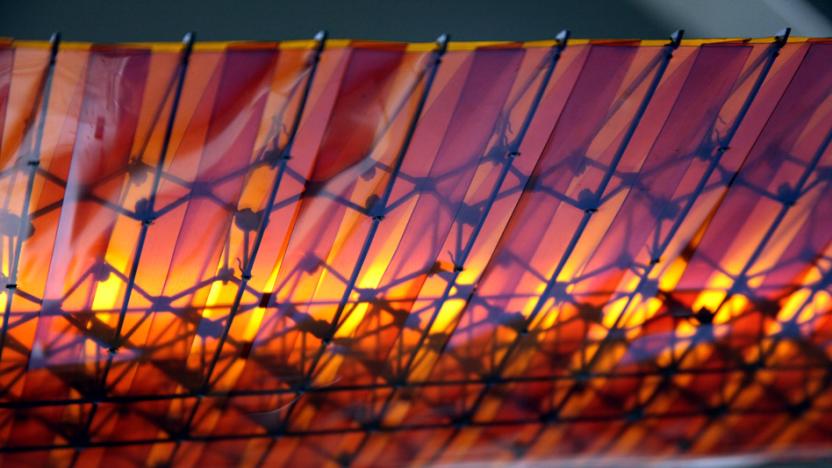bernoulli
Latest

MIT and NASA's flexible wing could be the future of aviation
A wing is one of the most technologically advanced pieces of an aircraft, designed with all manner of moving parts that take advantage of the Bernoulli Principle. Previous efforts to make the wing more flexible, like a bird's, have run into snags too. "The biggest problem was that most of these attempts relied on deforming the wing through the use of mechanical control structures within the wing," MIT News writes. "But these structures tended to be so heavy that they canceled out any efficiency advantages produced by the smoother aerodynamic surfaces." More than that, they apparently made the wing more complicated and had some issues with reliability.

Gecko-inspired water-powered robot scales glass, washes windows (sort of)
We've seen some pretty impressive Spidey-like robots in our time, but honestly, crawling walls isn't always enough to pique or interest. A robot that can scale buildings and wash windows -- now that's something to get excited about. Like this little wall climber, the gecko-inspired machine enlists the Bernoulli principle, using the flow of water through fluidic vacuum generators that allow the reptilian robot to get a grip on smooth surfaces. Next, the water is directed through a solenoid valve to a piston in the robot's spine, and finally, the excess liquid is expelled and used to get glass gleaming. Currently, the little machine is capable of carrying twice its weight, and uses a small battery to power a "wireless communication system" and the servos used to control its direction. We're definitely intrigued, but judging from the video (after the break), we're pretty sure it's no match for flesh and blood window washers.

Climbing robot can scale walls on a supersonic stream of air, won't leave fingerprints behind
There are plenty of wall climbing robots roaming the Earth, but few can scale heights as gracefully as this little guy can. Developed by researchers at the University of Canterbury in New Zealand, this bot can wind its way across any glass, metal or cloth terrain, without even touching its pods to the surface. The secret lies in Bernoulli's Principle, which states that as the speed of a fluid increases, its pressure decreases. This phenomenon also applies to streams of air, which, when moving at high speeds around of a circular gripper, can create a vacuum strong enough to hold things without actually touching them. In this case, air shoots out of the robot's feet at more than 2,000 miles per hour, creating enough pressure to lift the craft, while holding it close to the wall. The technology isn't new, but rarely can it support the weight of an entire device -- let alone the extra cargo that this climber's non-contact adhesive pads can hold. Researchers say the supersonic grippers will be available in "some months" and will probably cost "a few hundred dollars." As for the bot itself, Canterbury's engineers envision it being used for industrial inspections -- though the more we think about it, the more we realize just how dirty our windows are. Video after the break.


